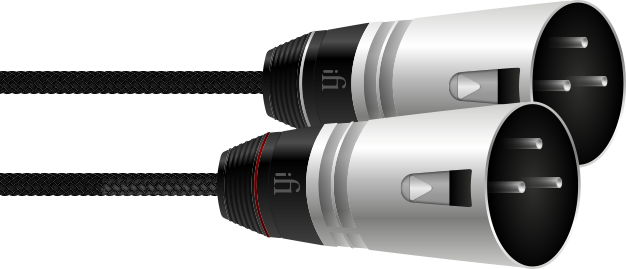XLR. Excellent.
Created to give you maximum quality balanced signal transfer and minimum interference, iFi’s 4.4mm to XLR cable employs heavy OFHC continuous cast copper, silver matrix conductors with a total cross-section of 16AWG for the best signal transfer.
The ‘helix’ effect.
The cable construction is a custom helix minZ™ design, minimised both in capacitance and inductance. It also has intrinsic shielding provided by the minZ™ helix construction. The design protects the cable from RFI and EMI noise and provides the cleanest transfer medium possible.
To further insulate the cable, we adopted the RoHS compliant, excellent dielectric property and super-soft (60P) HD polymer with 1500V AC spark resistance.

4N Oxygen- free copper ultimate conductivity and corrosion resistance.
5N Platinum pure silver minimal skin effect and impeccable audio signal transmission.

RoHS compliant super-soft polymer for protection.

Making it a multiple channels shielded cable.

Braided for low-resistance path to ground.

iFi’s own smooth surface connector and copper edge cut in a sharp angle to protect the 4.4 socket and extend lifetime.
1mm raised lip for precise connection.

iFi connector aluminium alloy pins and PVC. Minimum resistance, flawless balance.
Tom Evans who makes very nice phono stages made the following astute comment:
A rumble filter simply adds to the bass cut making your already “cut” records sound bass light. Plus, it “time-steps” the bass in relation to the higher frequencies (where our hearing is most sensitive) so much so it can confuse the ear into believing the bass is playing out of tempo.
iFi solution:
Since the very first iPHONO launched in 2012, we have used our own in-house ‘Subsonic Filter’. It made it into the iPHONO2 and the iPHONO3 and now, the ZEN Phono which is the very first time this filter is seen in such an affordable price level.
As there is only minimal vertical modulation remaining at very low frequencies with an an actual cut LP that is playable, we know that “vertical modulation” at low frequencies must be warp.
So we designed a filter to take advantage of this.
This is not artificial but real knowledge. By understanding fully how LPs are cut and replayed, it is possible to filter record warp strongly without at the same time attenuating low bass or adding group delay.











